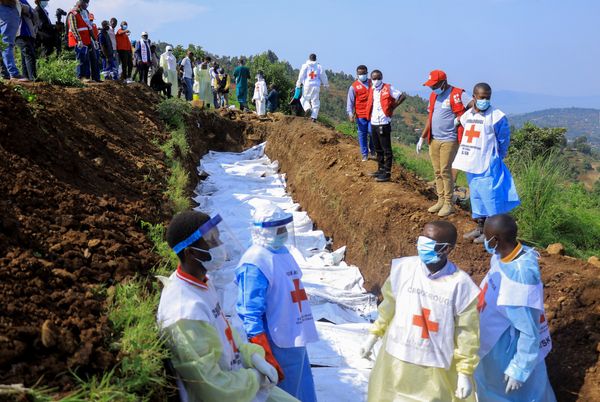About half a million babies die each year as a result of pre-eclampsia, an aggressive and potentially life-threatening problem in pregnancy. Approximately 46,000 women also die each year due to the disorder.
The condition – a high blood pressure (hypertension) disorder – can affect multiple organs in the woman’s body, including the liver, kidneys, heart, brain and blood clotting system, as well as the growth and development of the foetus. If severe, and untreated, it can lead to the placenta detaching from the womb (placental abruption), seizures, stroke, maternal death and stillbirth.
Pre-eclampsia can be difficult to predict, and it can progress rapidly. The only treatment is delivery.
In a recent paper we found that planned early birth reduced the risk of stillbirth and improved most outcomes for mothers and babies. We concluded that clinicians can routinely deliver babies for mothers who have pre-eclampsia, from 34 weeks – even in a low resource setting.
We recommend that planned early delivery is implemented to reduce adverse pregnancy outcomes in late preterm pre-eclampsia, particularly stillbirth. We argue that the intervention should form part of a concerted global effort to end all maternal and perinatal deaths from preventable causes.
When to deliver
Deciding when to offer birth requires careful balancing of risks and benefits. Early preterm delivery (before 34 weeks’ gestation) is only recommended if severe complications of pre-eclampsia have developed, where the benefit of delivery outweighs the risk of potential complications of early preterm birth for the baby (for example, breathing or feeding difficulties).
For the period between 34 and 37 weeks, there has not been enough research to guide women and clinicians as to whether it is better to routinely offer late preterm birth to all women with pre-eclampsia, or to watch and wait until either 37 weeks’ gestation is reached, or complications develop.
We set out to answer this question in a trial which we carried out in India and Zambia.
The Cradle-4 trial was a randomised controlled trial which compared planned delivery (initiating delivery within 48 hours of trial entry) to usual care (watching and waiting until 37 weeks, or the development of complications needing delivery). Women who agreed to participate were randomly allocated to either planned delivery, or to usual care. A total of 565 women with pre-eclampsia, between 34 and 37 weeks of pregnancy, without an immediate indication for delivery, took part. The trial was conducted across nine sites in India and Zambia.
The study found that planned delivery significantly reduced the risk of stillbirth – by 75%. In addition, planned delivery did not increase the risk of the baby needing to go to the neonatal unit. Neither did it increase the risk of short-term complications after birth, such as breathing or feeding difficulties. This is an especially important finding for clinicians working with limited neonatal resources, who can be reassured that planned early birth is safe.
Encouragingly, planned delivery reduced the risk of severely high blood pressure in the woman, compared to usual care. Rates of other complications such as eclampsia and placental abruption (where the placenta detaches from the womb) were also lower in the planned delivery group. Mothers who delivered early were as likely as those in the usual care group to achieve a vaginal birth, and spent less time in hospital.
Next steps
The current maternal mortality rate in the world is 223 per 100,000. The aim under the Sustainable Development Goals is to reduce that to 70 per 100,000 live births by 2030.
But this won’t happen unless there is a focus on interventions that address the major causes of maternal death in regions where they are most needed. These include sub-Saharan Africa and south Asia, according to the World Health Organization. Our findings show that one such intervention should be to incorporate planned delivery from 34 weeks into routine care.
But this won’t be easy, particularly in low- and lower-middle income settings, due to over-stretched, under-staffed healthcare systems, where access to key resources may be variable.
To progress the idea, a number of steps need to be taken.
Firstly, early delivery should be incorporated into national and international guidelines across the globe. For this to happen there must an increased understanding around pre-eclampsia via community engagement. Women need to be better informed about what to look out for and what action to take, and need to be able to access healthcare facilities.
Community engagement is critical to translating research into impact and creating awareness about ways to alleviate this health issue.
This has already been initiated in some countries. For example, our research group has developed community engagement tools including docu-dramas designed alongside communities in Zimbabwe, Haiti and Sierra Leone.
A recent dynamic awareness campaign about pre-eclampsia was launched in Sierra Leone. It included creating competitions at universities to produce poems and videos about pre-eclampsia, putting stickers on taxis and motorbikes and putting up posters.
In Zambia, a national television broadcast encouraging women to attend antenatal care and recognise the danger signs of pre-eclampsia was shown on World Pre-eclampsia Day.
Secondly, planned delivery needs to be implemented alongside a range of interventions. Medical practitioners need to be enabled to provide early risk stratification, prediction of pre-eclampsia, safe labour and delivery care, and postnatal follow-up.
Thirdly, more research needs to be done in resource-stretched settings. Currently, only 2% of clinical trials take place in sub-Saharan African countries and even fewer address the most important causes of maternal mortality.
The Cradle-4 Trial acts as an important example of how this can be changed, and demonstrates the power of locally-driven evidence.
Alice Beardmore-Gray does not work for, consult, own shares in or receive funding from any company or organisation that would benefit from this article, and has disclosed no relevant affiliations beyond their academic appointment.
This article was originally published on The Conversation. Read the original article.







